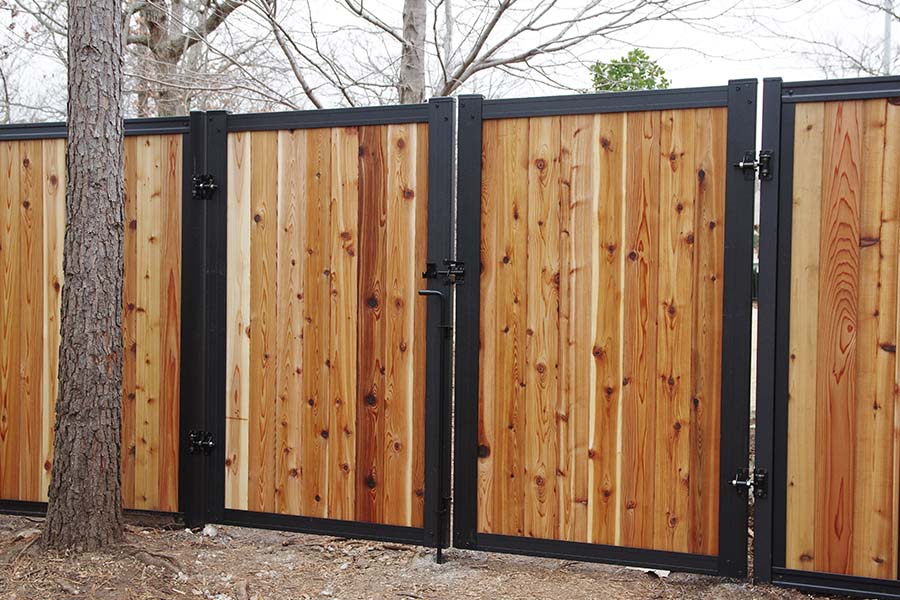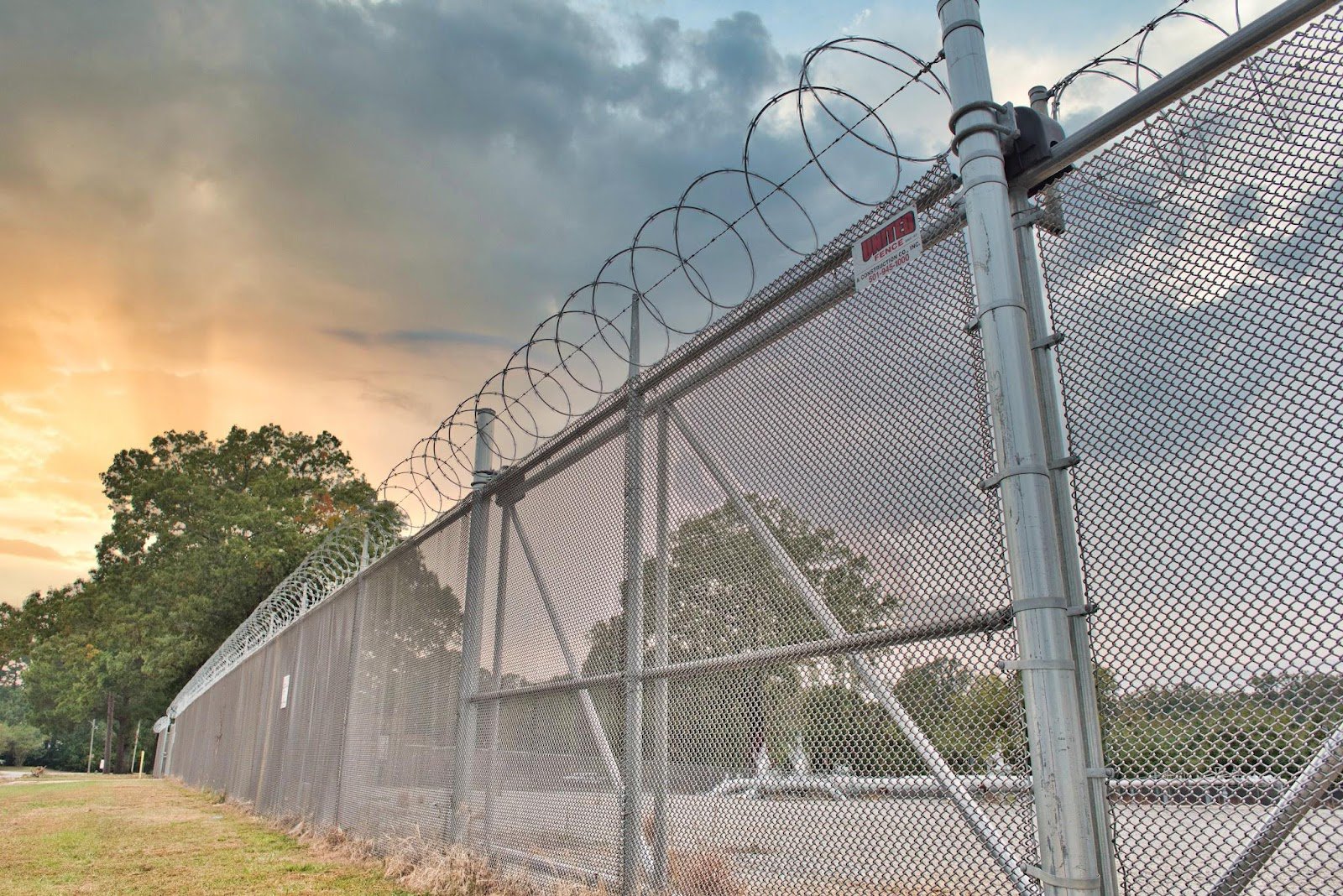Featured

When it comes to picking the ideal fencing product for your home, wood, plastic, and aluminum are amongst the most popular options. Below, we damage down the benefits and disadvantages of these 3 common fence materials.
Timber Fencing. Pros:
Aesthetic Appeal: Timber fences offer a natural, timeless look that enhances most types of landscape design and design. They can be quickly personalized with paint or tarnish, giving you the freedom to produce the ideal shade and finish for your building. Versatility: Wood can be utilized to develop a variety of fence designs, from traditional picket fences to a lot more contemporary designs like personal privacy fencings or rustic ranch-style fences. It's very easy to add or change to with time if your needs transform. Cost: Timber is typically more economical than plastic or light weight aluminum, making it an eye-catching selection for house owners on a budget. The preliminary cost of a wood fencing is generally less than the other products. Cons:

Upkeep Requirements: Wood fences need regular maintenance, consisting of staining, sealing, or paint to safeguard them from weathering, rot, and pest damages. Without correct care, timber can degrade rapidly. Durability: Wood is prone to harm from parasites like termites, and it can warp, crack, or split gradually as a result of exposure to the aspects. In areas with severe climate condition, timber might need to be replaced more regularly than other materials. Minimal Life expectancy: While timber fencings can last for several years with appropriate treatment, they usually have a shorter life-span than plastic or aluminum fences. Plastic Fence. Pros:
Low Upkeep: Among the most significant benefits of plastic secure fencing is its reduced upkeep needs. Unlike timber, vinyl does not need to be repainted, stained, or sealed. It's immune to fading, cracking, or bending, making it perfect for property owners who want a convenient fencing. Longevity: Plastic fences are extremely resilient and immune to the aspects, including UV rays, rain, and moisture. They're likewise resistant to bugs, such as termites, that can harm timber fences. Variety of Styles: Plastic fences been available in a broad range of styles and colors, and several mimic the look of timber without the maintenance downsides. You can select from personal privacy fences, picket fences, and more to match your needs. Lengthy Life expectancy: With correct treatment, vinyl fencings can last decades, far longer than wood fencings, and they come with guarantees that supply comfort. Disadvantages:
Greater Preliminary Expense: While plastic fencings can conserve money on upkeep for many years, they have a tendency to have a greater in advance expense than timber fencings, which might be a deterrent for some buyers. Restricted Customization: While plastic fencings are available in a selection of colors and designs, they lack the modification versatility that wood gives. You're limited to the pre-designed panels readily available, which might not fit every special aesthetic. Potential for Splitting in Cold Climates: In extreme chilly temperature levels, vinyl fences can become weak and may fracture under impact, making them much less suitable for locations with freezing winters. Aluminum Fence. Pros:
Sturdiness and Toughness: Aluminum is a light-weight yet strong material that withstands corrosion and rust, making it ideal for seaside locations or places with high moisture. Aluminum fences need minimal maintenance and can stand up to the elements for years. Aesthetic Allure: Aluminum fences supply a sleek, modern look. They can be found in a variety of decorative styles and can be used to develop an extra modern or stylish seek your home. Reduced Upkeep: Aluminum fences do not call for painting or securing, and they're resistant to rust and deterioration, making them unbelievably reduced upkeep over time. Safety: Light weight aluminum fencings give a higher level of safety and security compared to vinyl or timber fencings due to the fact that of their strong building. They can be equipped with locks and gateways to provide a safe and secure border around your building. Disadvantages:

Cost: Aluminum fences are usually more costly than wood or vinyl fences, both in terms of products and setup prices. This higher cost point can be a disadvantage for budget-conscious house owners. Less Personal privacy: Aluminum fences normally have an even more open style, with pickets spaced apart to enable visibility via the fencing. This might not be the ideal selection for your property if privacy is a concern. Prone to Denting: While light weight aluminum is rust-resistant, it can still be nicked or bent if struck with force, such as by a car or heavy equipment. While it will not corrosion, it might not preserve its pristine appearance if it obtains damaged. Which Product is Right for You? Choosing the most effective fence product depends on your specific demands, spending plan, and long-lasting plans for your residential property. Wood may be your ideal choice if you value visual modification and are prepared to keep it routinely. If you prefer low-maintenance sturdiness and want to invest a little bit a lot more ahead of time, plastic might be the excellent option. On the other hand, if you need a resilient, safe fencing with a streamlined look, light weight aluminum could be the best material for you.
Eventually, consider your environment, upkeep preferences, and aesthetic wishes when choosing your secure fencing product. Each alternative has its weak points and strengths, but with the appropriate care and setup, all three can give attractive and trusted limits for your residential property.
Latest Posts
Smooth Light Weight Aluminum Gutters: The Smart Option for Your Home
Published May 23, 25
1 min read
Safeguard and Improve Your Home with Weathercraft's Exterior siding Solutions
Published May 23, 25
1 min read
Check Out Best Vehicle Maintenance Solutions from Montclare Auto Repair – Reliable Repairs Await
Published May 23, 25
1 min read
More
Latest Posts
Smooth Light Weight Aluminum Gutters: The Smart Option for Your Home
Published May 23, 25
1 min read
Safeguard and Improve Your Home with Weathercraft's Exterior siding Solutions
Published May 23, 25
1 min read
Check Out Best Vehicle Maintenance Solutions from Montclare Auto Repair – Reliable Repairs Await
Published May 23, 25
1 min read